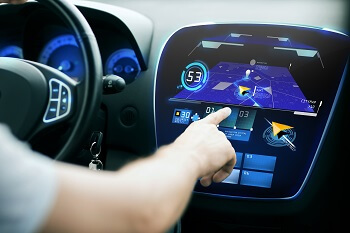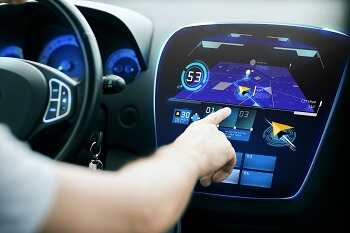 The National Highway Traffic Safety Administration (NHTSA) is a federal agency tasked with ensuring motor vehicle safety and preventing crashes on American roads. This is a daunting mission—and as a result of its broad mandate, the NHTSA also has broad authority to regulate the ways in which vehicles are manufactured and the ways in which motorists are allowed to operate them. In 2016, the NHTSA proposed a second phase of voluntary guidelines to help reduce distracted driving accidents, and it’s important to understand how these guidelines affect you, especially if you’re in a wreck with a distracted driver.
The National Highway Traffic Safety Administration (NHTSA) is a federal agency tasked with ensuring motor vehicle safety and preventing crashes on American roads. This is a daunting mission—and as a result of its broad mandate, the NHTSA also has broad authority to regulate the ways in which vehicles are manufactured and the ways in which motorists are allowed to operate them. In 2016, the NHTSA proposed a second phase of voluntary guidelines to help reduce distracted driving accidents, and it’s important to understand how these guidelines affect you, especially if you’re in a wreck with a distracted driver.
NHTSA Recommends Auto Manufacturers Make Less Distracting In-Car Devices and Interfaces
In an effort to reduce the rate of car accidents caused by distracted driving, the NHTSA released voluntary guidelines for auto manufacturers in 2013. These guidelines were created in an attempt to get auto manufacturers to think more seriously about their critical part in distraction-related safety.
Because a car’s electronic devices and features can act as a visual, manual, and/or cognitive distraction, the NHTSA proposed guidance to automakers to help them develop in-car devices customers wanted but that didn’t disrupt their attention or distract them. The agency recommended many changes, including:
- Reducing the complexity and task time required to use the device
- Allowing the device to be operated with just one hand, so the other hand could continue controlling the vehicle
- The necessary off-road glances required to operate the device be no more than two seconds
- The driver’s field of view not be blocked by unnecessary visual information
- The device should be operational with limited need for manual input
The NHTSA Prioritizes Smartphone Safety in the 2nd Phase of Recommendations
In November 2016, the agency announced another phase of proposed guidelines. While phase one focused on making a vehicle’s native manufactured devices safer, phase two proposes voluntary guidelines designed to encourage portable and aftermarket electronic device developers to design products that reduce the potential for driver distraction, including:
- Auto-pairing. When this feature is turned on, the driver’s smartphone will pair with the car’s wireless pairing field. Automatic pairing allows a driver to operate music or his phone controls using the car’s steering wheel or stereo console instead of his smartphone screen. This can mean fewer smartphone distractions.
- Driver mode. A driver mode feature in a native or third-party smartphone application would display a simpler interface or be operated using the vehicle’s car interface. Either change could reduce unsafe driver distraction.
Authority to Regulate Vehicle Technology
In a recent congressional hearing, the NHTSA’s David Strickland indicated that the Motor Vehicle Safety Act grants the NHTSA the power to regulate smartphones and other devices used in vehicles. Some have expressed concern over this issue, claiming the government may be overstepping its boundaries. Although the agency has not yet released regulatory restrictions for the creation and use of distracted apps while driving, it may do so in the near future.
No matter how this plays out, the NHTSA continues to encourage all drivers to do their part by completely stowing devices when possible and always wearing seatbelts to protect against distracted drivers who may cause an accident.
Turn to an Attorney for Help
If a distracted driver injured you in an accident, it’s important to contact an attorney. Virginia’s fault laws may complicate your fair recovery, but the team at Kearney, Freeman, Fogarty & Joshi can use solid evidence to prove the other driver’s liability for your injuries and property damages. Call today to begin a conversation with us.
|
Related Links: |


